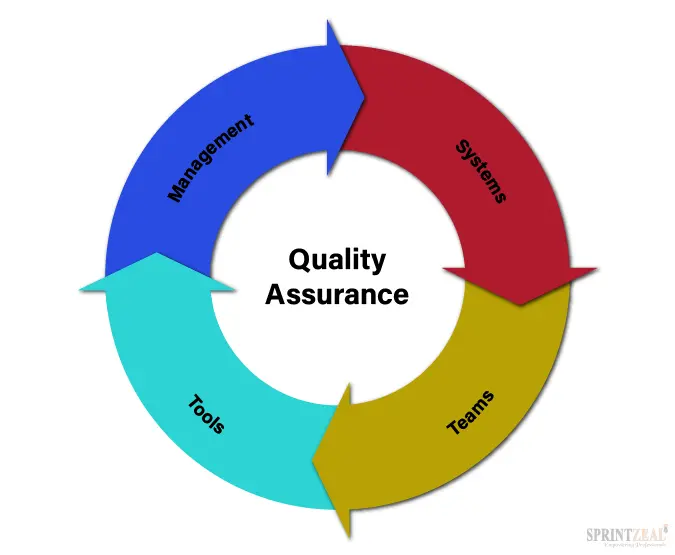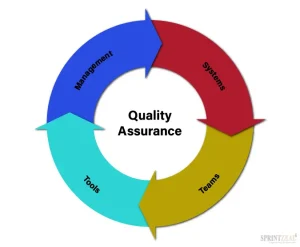
1. Introduction: Why Growing Businesses Need Assurance Systems
As businesses expand, they face more complex risks, regulations, and operational challenges. Assurance systems play a vital role in ensuring that growth is sustainable and risks are mitigated. This section covers how assurance contributes to scalability and risk management. It also clarifies the differences between assurance, auditing, and compliance, providing a foundational understanding for businesses aiming to grow confidently.
- The Role of Assurance in Business Scalability and Risk Management: Assurance helps growing businesses identify risks and streamline processes to ensure scalability without compromising operational integrity.
- Differentiating Assurance, Auditing, and Compliance: Understanding how assurance systems differ from auditing and compliance helps businesses implement comprehensive risk management strategies.
2. Assessing Your Assurance Needs
Before implementing an assurance system, businesses must evaluate their current operations, identify risks, and align assurance efforts with their strategic goals. This section highlights the importance of risk identification and stakeholder expectations in the assurance process.
- Identifying Key Risks as Your Business Expands: Growth brings new risks. Learn how to assess these risks and incorporate them into your assurance framework.
- Aligning Assurance with Strategic Business Goals: Ensure that your assurance systems are directly linked to your company’s growth objectives for maximum effectiveness.
- Meeting Stakeholder Expectations for Trust and Transparency: An assurance framework must reflect the needs of stakeholders to build trust and ensure transparency.
3. Choosing the Right Assurance Framework for Your Business
Choosing the right assurance framework is critical for ensuring that it aligns with your business needs. This section explores popular frameworks like ISO, COSO, and COBIT, and offers guidance on how to select the best one based on industry, size, and specific requirements.
- Overview of Popular Assurance Frameworks (ISO, COSO, COBIT): Understand the strengths of various frameworks to choose the one that fits your business needs.
- Selecting a Framework Based on Industry and Business Size: Tailor your choice of framework to the specifics of your industry and company size for better alignment.
- Tailoring an Assurance Framework to Meet Specific Needs: Customize your chosen framework to address unique business risks and operational challenges.
4. Establishing Robust Internal Controls
Internal controls are the backbone of any assurance system. This section discusses how to design controls that mitigate operational risks and foster a secure environment for business growth.
- Designing Internal Controls Aligned with Assurance Goals: Internal controls should support your broader assurance goals, ensuring effective risk management.
- How to Develop Procedures That Reduce Operational Risks: Establishing procedures that mitigate risks at every stage of growth.
- Building an Effective Control Environment for Business Growth: A strong control environment is essential to maintaining stability during periods of growth.
5. Integrating Technology into Assurance Systems
Technology can enhance assurance systems by automating processes and providing better data insights. This section explores how businesses can leverage automation, AI, and data analytics to streamline assurance.
- Leveraging Automation to Streamline Assurance Processes: Use automation tools to increase the efficiency and accuracy of your assurance processes.
- The Role of AI and Data Analytics in Assurance: Discover how AI and data analytics can offer deeper insights and predictions in risk management.
- Cybersecurity Assurance: Protecting Data in a Digital Age: Ensure your business is prepared for digital threats by integrating cybersecurity into your assurance framework.
6. Implementing Assurance Procedures
This section offers a step-by-step guide on establishing assurance protocols, training employees, and ensuring continuous improvement.
- Step-by-Step Guide to Establishing Assurance Protocols: Implement effective assurance procedures that cover all aspects of risk and compliance.
- Training Employees on Assurance Practices and Compliance: Employee buy-in is critical for assurance success. Learn how to effectively train staff.
- Monitoring and Adjusting Assurance Processes for Continuous Improvement: Assurance processes should evolve. Regularly review and refine systems to meet changing business needs.
7. The Role of Independent Assurance Providers
For growing businesses, third-party assurance providers can offer an unbiased assessment of systems and risks. This section details when and how to outsource assurance services.
- When to Outsource Assurance to Third-Party Experts: Learn when it makes sense to bring in external providers for assurance tasks.
- Benefits of External Assurance for Growing Businesses: Third-party providers can offer valuable insights and added credibility.
- How to Select the Right Assurance Service Provider: Choose the right provider based on their expertise, industry knowledge, and track record.
8. Reporting and Reviewing Assurance Results
Transparent reporting is key to building trust and ensuring accountability. This section explains how to create clear assurance reports and continuously review the system for improvements.
- Developing Transparent Assurance Reports for Stakeholders: Build trust by creating comprehensive and transparent assurance reports.
- Regularly Reviewing and Updating Assurance Systems: Assurance is an ongoing process. Learn how to keep your systems up-to-date.
- Metrics and KPIs for Measuring Assurance Success: Use specific metrics to measure the effectiveness of your assurance framework and identify areas for improvement.
9. Challenges in Implementing Assurance Systems
Even the best-designed assurance systems can face challenges. This section highlights common pitfalls and offers solutions for overcoming them in growing businesses.
- Common Pitfalls in Assurance System Implementation: Understand the common challenges and how to avoid them.
- Solutions for Overcoming Assurance Challenges in Growing Businesses: Practical strategies for addressing hurdles in assurance system implementation.
10. Conclusion: Ensuring Long-Term Success through Assurance
Assurance systems are critical for long-term business success. This conclusion emphasizes the need for continuous evolution in assurance practices to adapt to a growing and changing business environment.
- The Continuous Evolution of Assurance Systems in a Growing Business: Assurance frameworks should grow alongside your business.
- Future Trends in Assurance for Small and Medium Enterprises (SMEs): Stay ahead of the curve by understanding the emerging trends in assurance for SMEs.
This structured guide offers growing businesses a comprehensive roadmap to implementing effective assurance systems that enhance risk management, compliance, and scalability.



